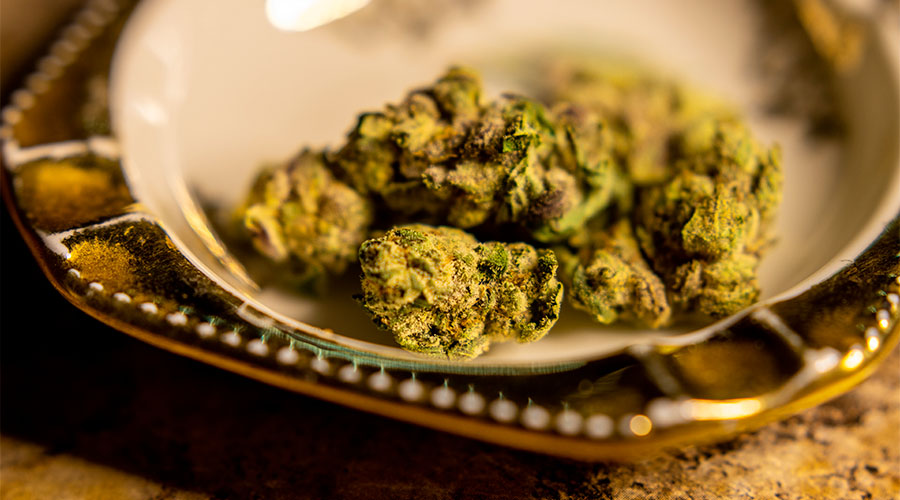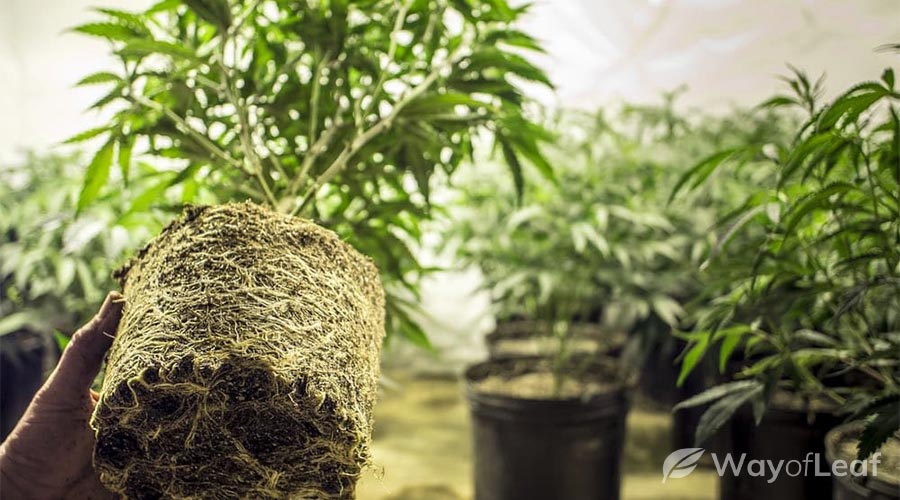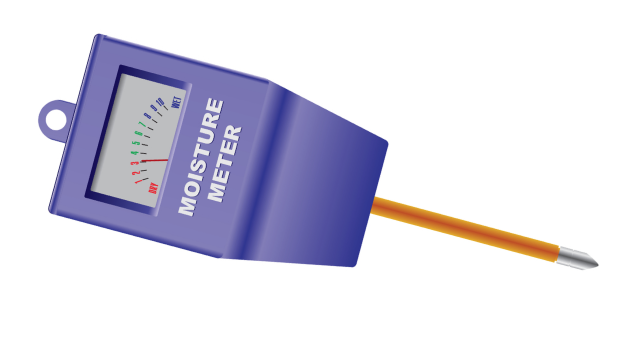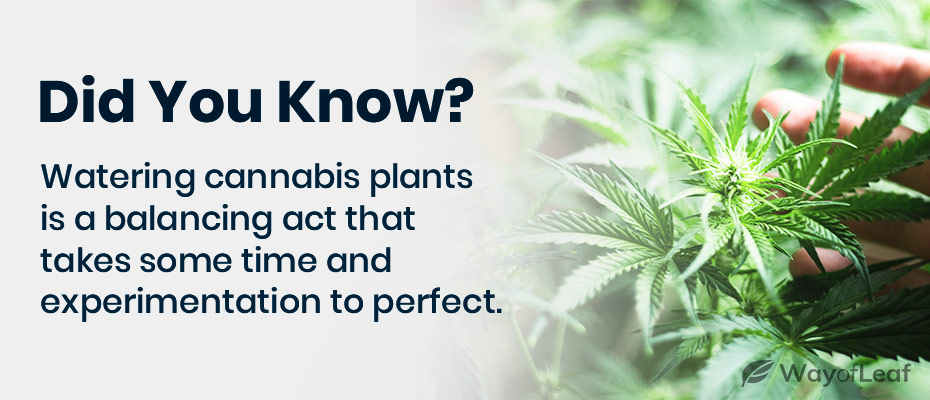Almost every grower has encountered, at some point or another, a situation where his/her marijuana plants are drooping. Encountering drooping weed is common for both beginner and advanced growers, but the good news is you don’t need a Ph.D. to learn how to fix it.
Drooping weed is curable, but it’s still important to diagnose the problem before it reaches the point of no return. In this quick guide, we’ve identified the main reasons why your weed plants are drooping, and what you can do to perk them back up to a strong and healthy state.
We also provide a few quick hacks to prevent droop from happening in the future.
Why Are My Cannabis Plants Drooping?
Your cannabis plants are most likely drooping due to an insufficient watering schedule. Many growers think daily watering is mandatory, but this is rarely the case for cannabis. Instead, the best method to prevent drooping plants is to water using ‘wet-to-dry cycling.’
The process is super simple: saturate and flood your entire pot(s) with water, then wait until the soil has almost completely dried out before you water again. Wet-to-dry cycling forces your roots to constantly search the soil for moisture, producing a healthy, evenly spaced, and highly robust root system.

In collaboration with our team at WayofLeaf, Parker Curtis and the award-winning team at Homegrown Cannabis Co. have put together a free 5-part DIY growing series (along with step-by-step eBooks) that is changing the way people grow cannabis at home. Check out the 100% free online series using the link below:
Cannabis Plants Need A LOT of Water…
Did you know cannabis plants are composed of anywhere between 90 and 95% water? As is the case with all plants, water regulates a marijuana plant’s temperature and helps transport nutrients through it. Therefore, if there is a problem with your marijuana plant, the first thing to look at is how it has been watered.
A lack of water can certainly be an issue and can have a variety of consequences, including:
- Reducing the rate of photosynthesis in the plant. This slows the rate of growth and development of the plant.
- Stagnation of nutrient delivery causes nutritional deficiency.
- The plant is forced to breathe faster, causing it to invest precious energy in breathing instead of growing.
But dropping isn’t the only symptom of a poorly watered cannabis plant. Lack of water can also cause your leaves to shrivel suddenly, begin to wither, or even become brighter.
That being said, while drooping leaves are most often indicative of an under-watered plant, it’s not impossible for new growers to over-water their plants. The roots of your plants must have access to moisture 24/7, but you don’t want to oversaturate them. This is another reason why wet-to-dry cycling is important.
The Dangers of Overwatering Your Cannabis Plants
Did you know that providing too much water to your plant can also cause your plant to die? Too much water prevents your plant from taking in oxygen. The roots themselves are negatively affected by the moisture. They soften over time and eventually die. Furthermore, your plant will lose its vitality and become vulnerable to pests.
Therefore, when you see your weed drooping, you may assume that it is in dire need of water. In fact, adding more could kill your plants! Aside from drooping leaves, other signs of an overwatered marijuana plant include:
- Firm leaves that are curled down from the stem to the leaf.
- Eventually, leaves begin to turn yellow.
- Your plants begin to droop after being watered.
It is important to note that overwatering could mean giving too much water at once or watering your plants too often. You may also be using a growing medium that holds water without enough air, or else there isn’t adequate drainage.
Remember, marijuana plants get oxygen via their roots. The vital oxygen is dissolved in water, and there are pockets of air in a growing medium that provide a vital oxygen source. When you water your plants too frequently, the roots are stuck with stagnant water. At this stage, your marijuana is drooping because its roots are in dire need of oxygen.
5 Solutions for Drooping Weed
1. Use a Growing Medium with Excellent Drainage
Choose your growing medium carefully. If water is unable to run to the bottom of the container, it stagnates by the roots, which results in overwatered plants. We recommend avoiding clay-based soil because it holds far too much water. Invest in a premium-grade potting mix that includes perlite, as this combination provides excellent drainage.
It is also best to begin proceedings with a smaller container to decrease the risk of overwatering your seedlings.
Please ensure that there are ample drainage holes to allow water to reach the bottom of the container. If you find that water moves through the growing medium too slowly, add perlite to boost oxygen and speed up the drainage process.
Check the plant’s tray regularly, and don’t allow it to sit in a dish that has collected runoff water. Soil with poor drainage, for example, will resemble mud when watered too often.
2. The Finger/Knuckle Method
Learning how to water your cannabis plants properly is one of the greatest skills you can develop. If your plants are being overwatered, causing the leaves to droop, the best thing you can do is give them more time between waterings.
You can determine whether your plants need more water by placing two fingers (or knuckles) into the soil. Ideally, the top inch of the growing medium will be dry before you start watering again. If the soil is still moist at the top, wait until it dries before adding more water. If the soil is soggy, you have already overwatered your plants and must give them a few days to dry out.
When it is time to water your plants, continue adding water to the growing medium until you see approximately 20% extra runoff water drain out of the bottom of the container. If you find that the first inch stays wet for longer, it is a sign that you either need to give less water or else the drainage needs to be improved. Your goal should be to water your plants every 2 or 3 days.
WAYOFLEAF’S CHOICE – Homegrown Cannabis Co.
Homegrown Cannabis Co. is the master when it comes to seeds. Offering a massive variety of well-categorized cannabis seeds, this company not only creates a resource for superb-quality options,, including feminized seeds, but it also provides extensive growing information for those looking for some support along their journey.
3. Lift the Pot Method
Another simple way to tell if a potted plant is thirsty is to pick it up. Marijuana plants tend to use all the water in their pots and, over time, become lighter. If you need something for comparison, you can get an extra pot and fill it with growing medium.

Now, you can use this new container to compare, as it represents the ‘dry weight’ of your growing medium. If you pick up a potted plant and it only feels marginally heavier than your dry pot, then you know it’s time to get watering.
If the growing medium seems to remain wet for a long time (4+ days), you may need to improve the drainage. It can also become a problem if you put tiny plants in containers that are far too large.
4. Soil Sensor
This is another excellent way to measure the dryness of your soil. You can easily purchase a soil sensor online (Amazon) or in a gardening store. Soil sensors cost around $10-$20. They are pretty accurate, and you don’t have to rely on intuition. Simply prod the sensor into the soil to get a reading.

In case you were wondering, there are two primary soil sensor types used to measure moisture. Volumetric sensors measure the volume of water in the soil. Tensiometric sensors measure potential soil moisture levels. A tensiometer is sensitive to soil properties and estimates how tightly a specific soil type retains water.
If you are an expert in horticulture and have money to spend, you could invest in Time Domain Reflectometry (TDR). It measures soil moisture quickly and accurately. However, it is costly and often needs recalibration. Also, you need a level of skill to interpret the data properly.

Overall, a basic soil sensor is your best bet. It is cheap, effective, and easy to use. More importantly, it could help you identify an issue with your soil before it becomes a real problem.
5. Choose a ‘Dry’ Strain
If all of the above doesn’t work and you’re still struggling, one of these strains could be the ultimate solution. This is also recommended for people who live in hot climates. There are specific strains from Colombia, Jamaica, Cambodia, and Mexico that grow very well in warm climates.
These strains tend to thrive outside and are also perfect for those who cannot provide their plants with an adequate amount of water.
Alternatively, you can look closer to home for strains such as Green Crack and Blue Dream. Both are known for being relatively easy to grow. They don’t need as much water as other commercial strains and can be left alone for more extended periods with less maintenance required.
How to Help a Drooping Plant?
The main thing to remember is that drooping (or wilting) leaves mean that your plant has a deficiency. Unfortunately, a deficiency can come from several areas. On the plus side, in the vast majority of cases, drooping leaves are a sign of a plant that has been overwatered or underwatered, or else it is a sign that your plant is either getting too many or not enough nutrients (and issues with watering are often linked with nutrient problems).
When you choose a growing medium with good drainage, you eliminate many potential crises from the get-go. You can check the moisture content of the growing medium by using your fingers or by checking the weight of the pot. A more accurate method is to invest a few bucks in a soil sensor, which takes the guesswork out of things.

Watering your plants correctly to avoid drooping leaves begins by getting your timing right. It is best to water first thing in the morning. Saturate your growing medium until you see around 20% of the water dripping out of the bottom of the container. That is enough water for the day.
Don’t water the plant again until the first inch of the growing medium is dry. If your plants are drooping, let the medium dry out completely and use a skewer to poke holes around it to aerate. Be careful not to damage the roots! Poke around the edges of the medium to about two inches down. You can create small holes by moving the stick in a circular motion.
Get another thin stick; this is your support. Place it close to the plant’s base and rest it, or else you can tie it to the plant’s main stem. Check to see that the branches and main stem of the plant are not weak and thin. If they are, it may be a sign that they are starting to stretch for light. In any case, place your plant directly beneath the light source, and ensure it gets at least 18 hours of light per day.
Drooping leaves in the early stages of the growth cycle will probably set you back a few weeks. Wait the extra time to begin flowering, and you can still benefit from a vigorous, healthy plant that offers a significant yield.
![7 Must-Read Rules for How to Grow Weed [And Not Get Caught…]](https://wayofleaf.com/wp-content/uploads/2018/07/mj_follow-these-7-rules-for-how-to-grow-weed-640x225.jpg)

![The Best Insects to Benefit Your Cannabis Garden [Top 10]](https://wayofleaf.com/wp-content/uploads/2020/04/mj_the_best_insects_to_benefit_your_cannabis_garden-640x225.jpg)



![8 Tips for Growing Purple Urkle [Grower’s Guide]](https://wayofleaf.com/wp-content/uploads/2019/01/wol_growing-purple-urkle-marijuana-640x225.jpg)


![How to Dry Cannabis Flower [The RIGHT Way…]](https://wayofleaf.com/wp-content/uploads/2018/08/wol-banner-how-to-dry-marijuana-flower-640x225.jpg)


